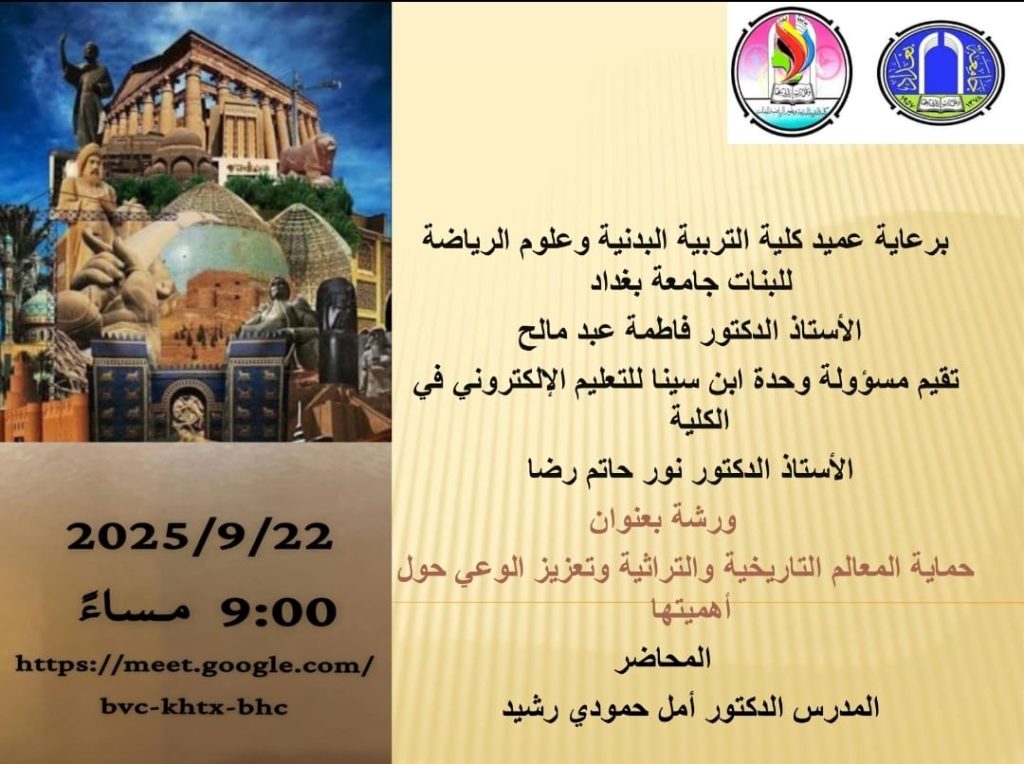The Ibn Sina E-Learning Unit at the College of Physical Education and Sports Sciences for Women, University of Baghdad, under the supervision of its head, Prof. Dr. Noor Hatem Redha, organized an online scientific workshop titled )Protecting Historical Landmarks and Raising Awareness of Their Importance – The Shrine of Imam Ali (peace be upon him) as a Model). Prof. Dr. Amal Hammoudi Rasheed from the College of Basic Education at Al-Mustansiriyah University presented the lecture.
The workshop aimed to highlight the importance of preserving historical landmarks in general, emphasize the community’s role in safeguarding them, and shed light on the significance of the Shrine of Imam Ali (peace be upon him) as a central site of the doctrine of Wilayah (Guardianship). It embodies the nation’s connection to the Imam, who continues the path of prophethood in leadership and guidance. It also addressed ways to maintain and develop the shrine.
The workshop covered five main themes:
First, historical landmarks are important as mirrors of civilizations and repositories of identity, with the Shrine of Imam Ali (peace be upon him) in Najaf al-Ashraf standing out as one of the most sacred Islamic shrines and a destination for millions of visitors annually.
Second: Challenges facing historical landmarks, including natural, human, societal, and technological challenges.
Third: The religious and civilizational dimensions of the Shrine of Imam Ali (peace be upon him) in Najaf and its close connection to the Prophet Muhammad (peace be upon him and his family and companions).
Fourth: The shrine’s Architectural development has witnessed remarkable growth, reflecting the evolution of Islamic art and architectural traditions across the ages.
Fifth: Raising community awareness and protection strategies, such as awareness campaigns for visitors and students in schools and universities, and media and tourism education. The session also stressed the importance of periodic maintenance using modern techniques that respect the site’s heritage character, adherence to protective laws and regulations, and cooperation with international organizations such as UNESCO.
This workshop contributes to achieving the United Nations Sustainable Development Goals, specifically Goal 4: Quality Education, and Goal 11: Sustainable Cities and Communities.
